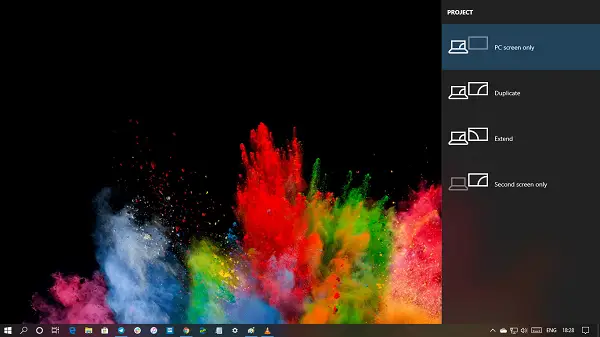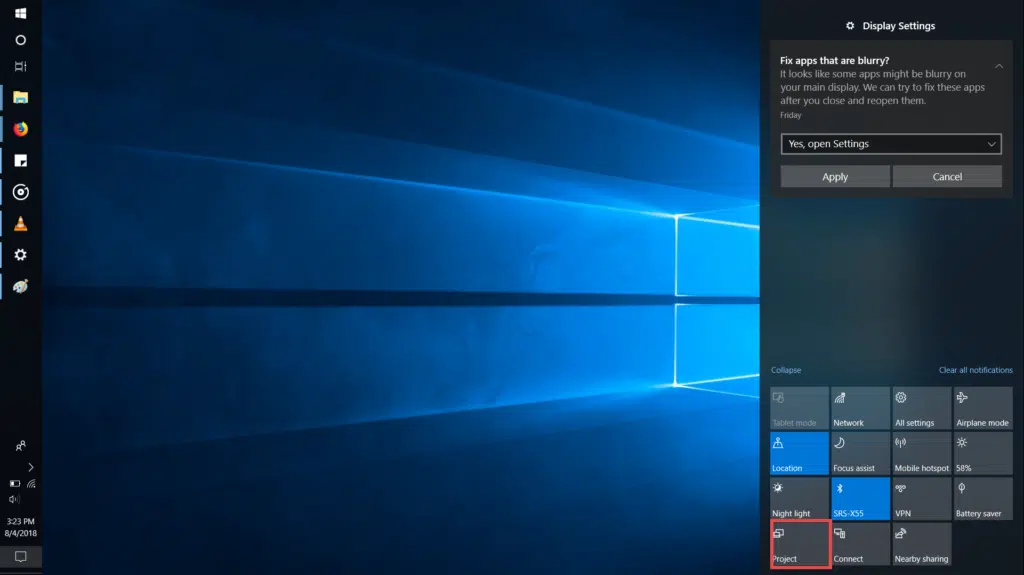Table of Contents
The Easiest Way to Connect Laptop to TV With Windows 10?
How To Connect Laptop To TV HDMI Windows 10? The easiest way to connect your laptop to a TV is with an HDMI cable. Many modern laptops have HDMI ports while older ones may have mini DisplayPort or even VGA ports.
Depending on the type of TV you have, you may need to adjust the input source using its remote. Then, you can enjoy your favorite content on a larger screen.
Connect the Laptop to the TV:
Whether you’re showing vacation pictures to family or playing triple-A games on a big screen, connecting your laptop to the TV opens up a whole new world of possibilities. The key is having the right hardware — both your laptop and TV need to have HDMI ports that are compatible with this type of connection. Fortunately, there are a few different ways to do this, depending on the model of your TV and the port types of your laptop.
The simplest method is to use an HDMI cable. You can get these for fairly cheap, and they support high-resolution video as well as audio. The other option is to use a wireless HDMI dongle, which can be a little more expensive but offers a lot of flexibility.
If your laptop doesn’t have an HDMI port, don’t despair – it likely has a USB-C, Thunderbolt, or DisplayPort port, which can all be used with an adapter to connect to the TV. If you don’t have any of these ports, you can also use a VGA cable, although this will only carry the video signal and not the audio.
Once you have the correct cables connected, make sure that both devices are powered on and set to the appropriate input. You can do this by using your TV’s remote control to select the HDMI input. When the connection is complete, your laptop will automatically begin mirroring its screen on the TV.
Connect the HDMI Cable to the Laptop:
The simplest way to connect your laptop to the TV is with an HDMI cable. Most laptops built in the last half-decade have an HDMI port, which looks like a long and thinner USB port you’ve probably used to hook up flash drives and printers. HDMI cables are inexpensive and easy to find, and they can handle both audio and high-resolution video.
To use HDMI, plug one end of the cable into the HDMI port on your laptop and the other end into an HDMI input on your TV. If your TV supports HDMI mirroring, select the option using the remote. If not, you’ll need to select a PC or RGB input on the TV, depending on your TV’s specs.
If your laptop doesn’t have an HDMI port, but it has a full-sized USB-C port or a DVI or DisplayPort port, you can purchase adapters to convert these connections to HDMI. These devices are relatively inexpensive, and they can be found at most major electronics stores.
If your laptop and TV both have an HDMI port, simply connect them together with an HDMI cable and select the appropriate input on the TV using its remote. You can also adjust the TV’s settings to choose whether to duplicate your laptop screen or extend it to fill your TV screen.
Connect the HDMI Cable to the TV:
The simplest way to connect your laptop to the TV is with an HDMI cable. This is the type of cable that carries both audio and video, and it’s usually capable of supporting high-definition resolutions. If your laptop has a full-sized HDMI port, you don’t need any special adapters or equipment to make the connection; simply plug the cable into the laptop and the TV. A second or two later, the laptop’s screen will appear on the TV.
If you don’t have an HDMI port on your laptop. You can use a USB hub or docking station that has an HDMI port. You can also buy an HDMI adapter for your laptop if necessary. Before connecting the cable. Make sure that both the laptop and the TV are turned on and set to the correct input source.
If you have trouble getting the HDMI connection to work, try restarting the laptop. You may also need to change the input source on the TV to the numbered HDMI port that you plugged the cable into. If the problem persists, you can try updating the display drivers on your laptop. If this doesn’t help, you can roll back the driver. This option is available by opening the Device Manager, expanding the Display adapter category, right-clicking on the driver, and selecting “Roll Back Driver.”
Turn on the TV:
Television is a great way to watch movies or TV shows. And it can also be used as an extended monitor for your laptop. This is especially useful for presentations or when you want to show something to a group of people. Connecting your laptop to the TV using HDMI is easy and quick, and requires no additional equipment or software.
The first step is to locate the HDMI port on your laptop. This is usually on the back or side of the laptop and will look like a regular USB port. If your laptop does not have an HDMI port, you can use a VGA cable instead. However, VGA cables only carry video, and you will need to use a separate audio cable for sound.
Once you have located the HDMI port on your laptop, plug one of the cable’s connectors into the port. Then, connect the other end of the cable to the HDMI port on your TV. Once the connection is complete, turn on the TV and change its input source to HDMI.
Once the TV is turned on, you can start using it as an extension of your laptop. To do this, right-click on the desktop of your laptop and select Display Settings. From the Multiple Displays drop-down menu, select Duplicate this display. This will mirror your laptop screen on the TV, and you can control the TV with your mouse or keyboard.






Add comment